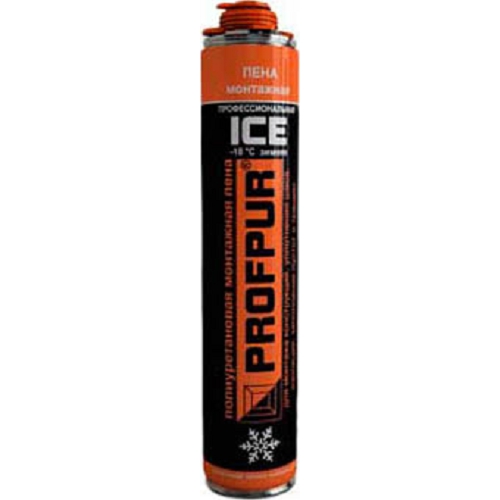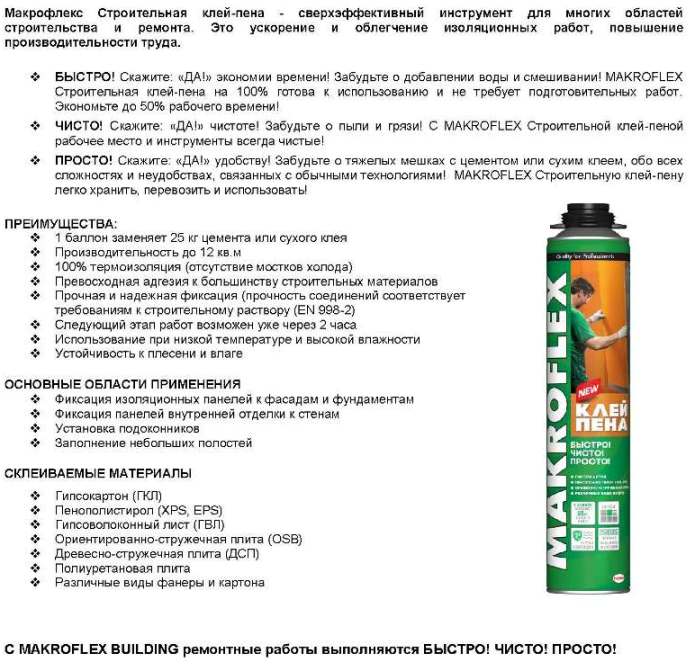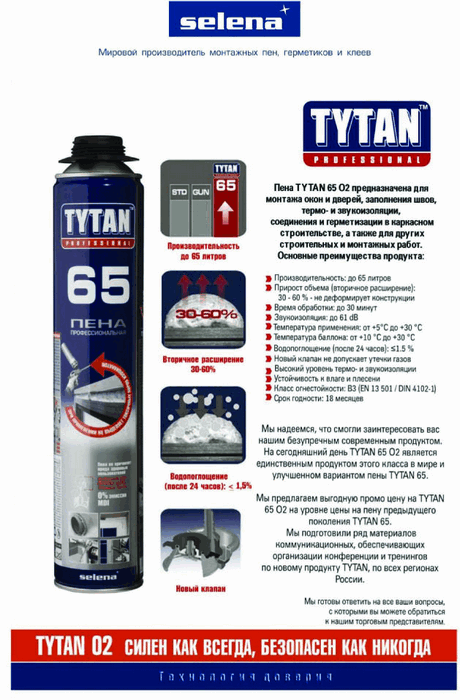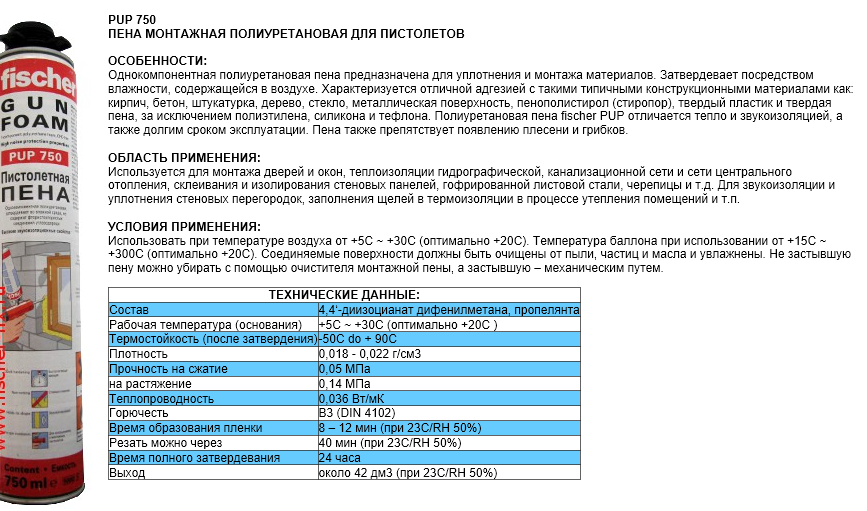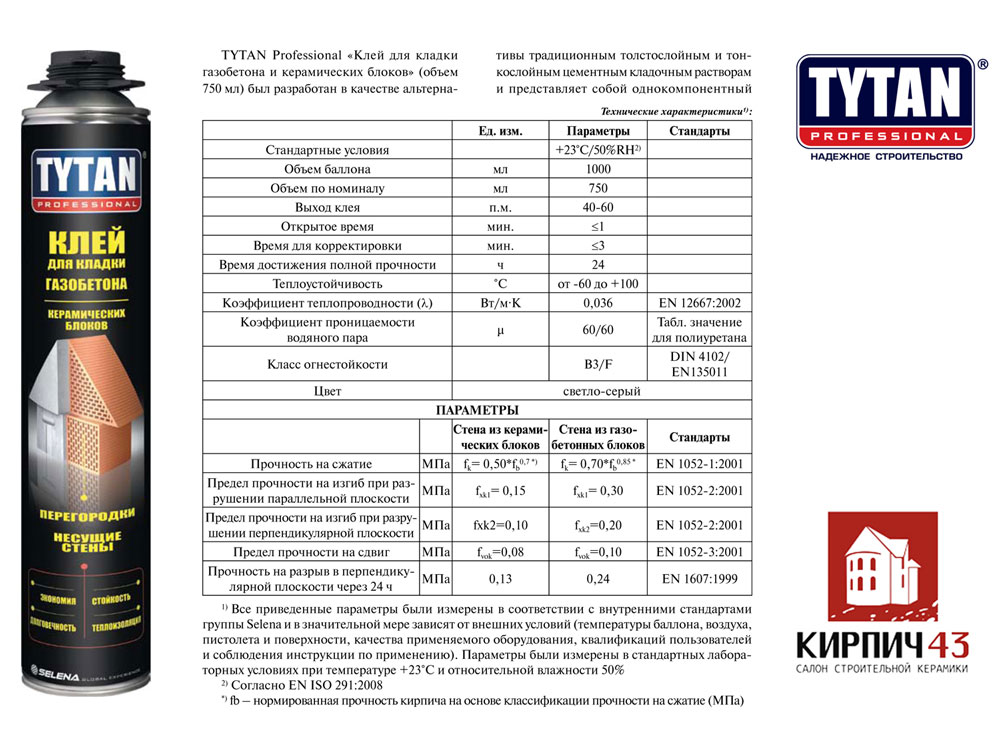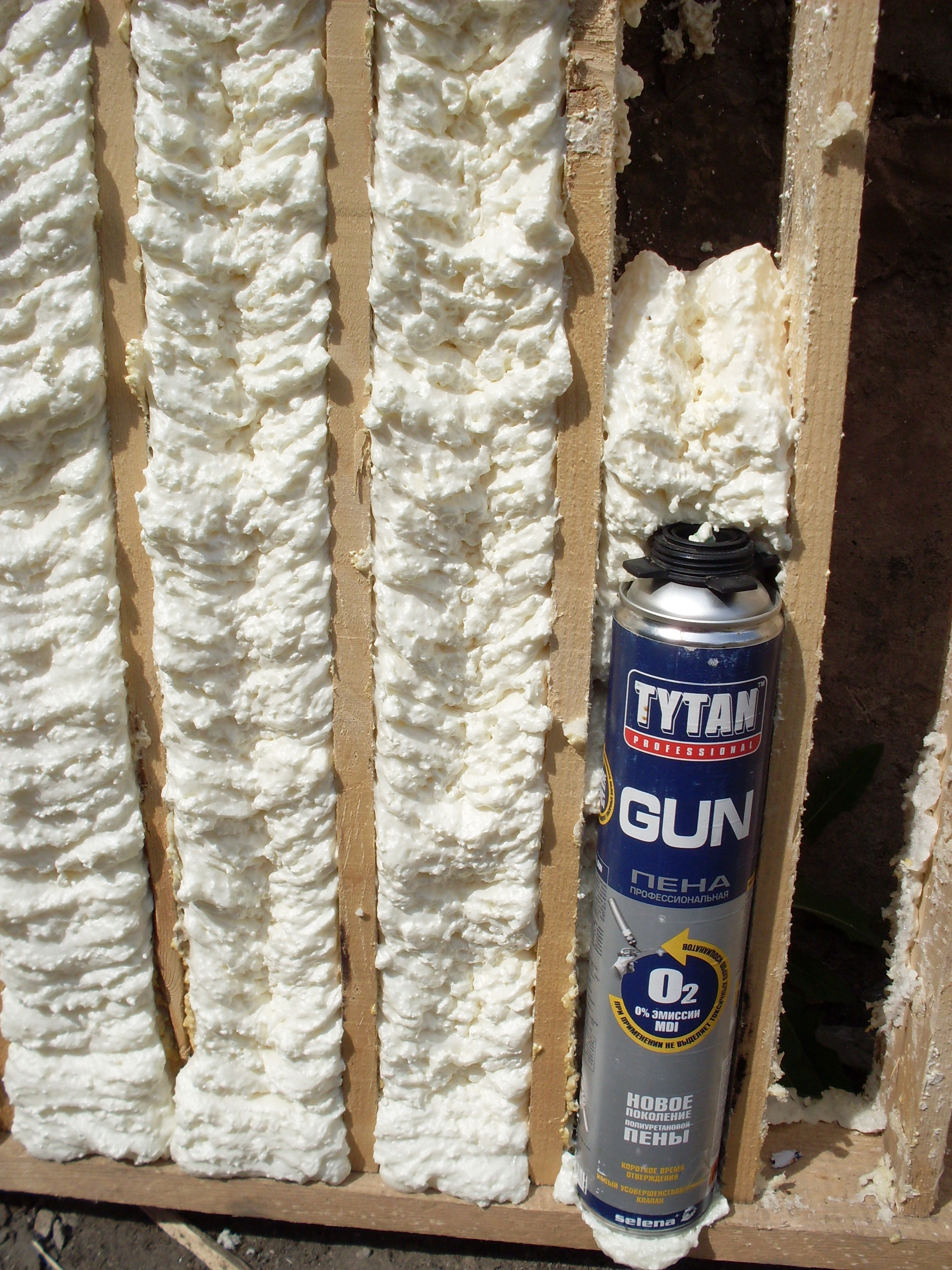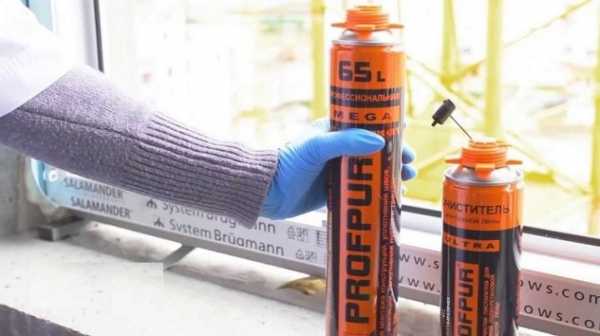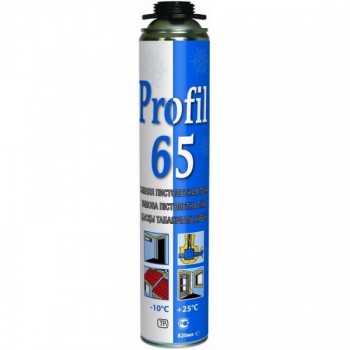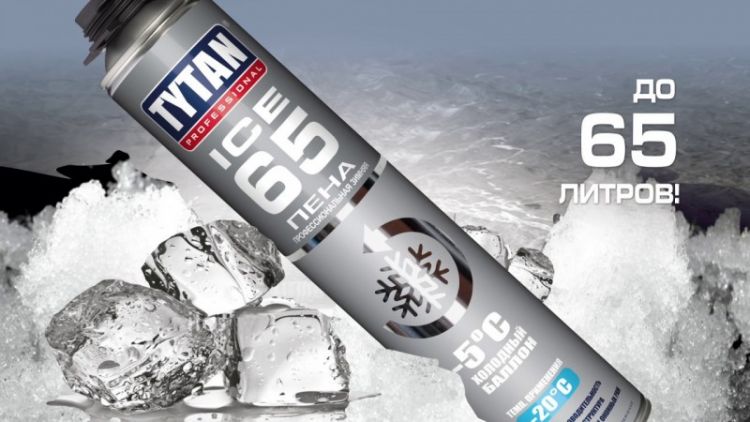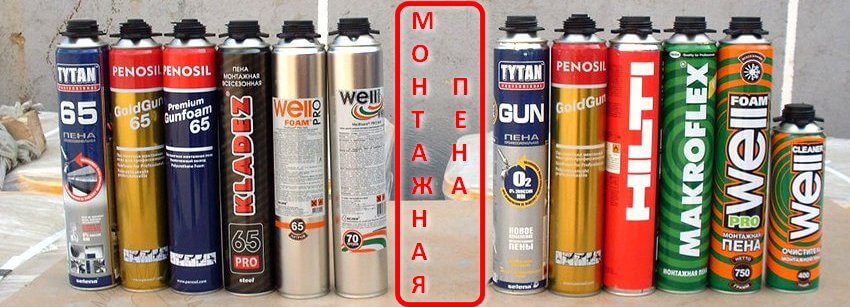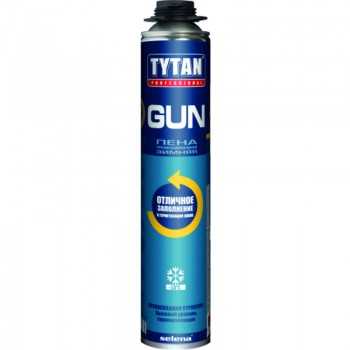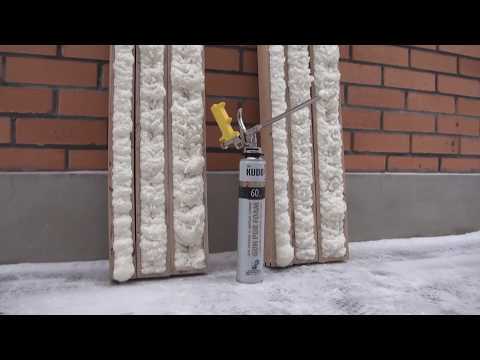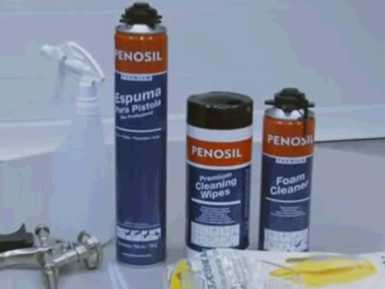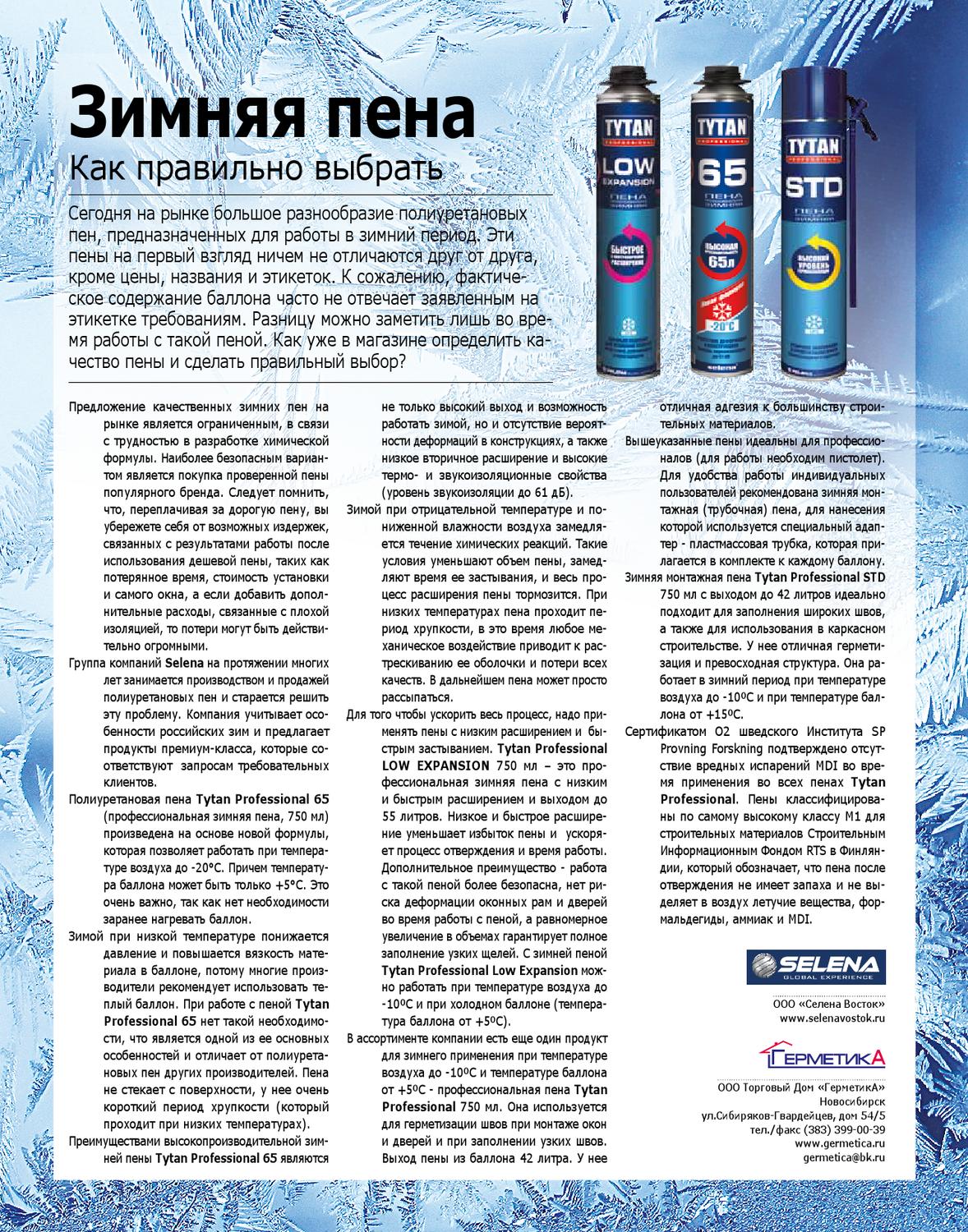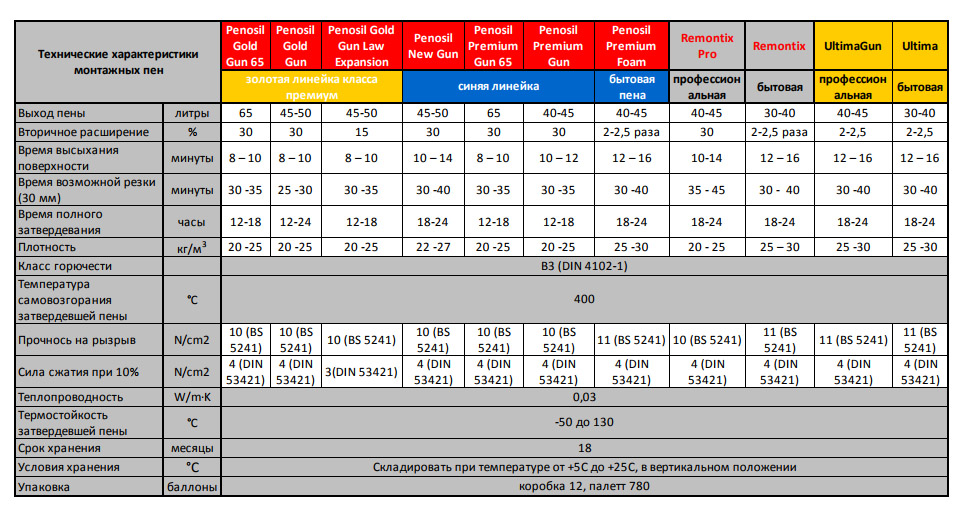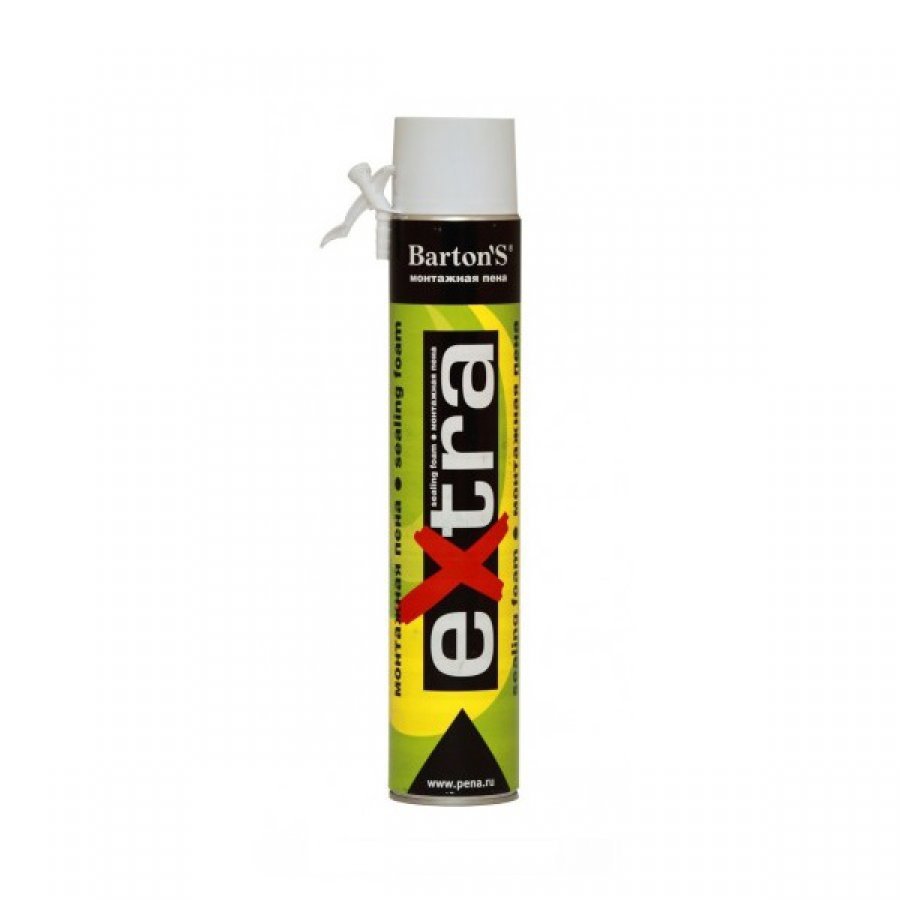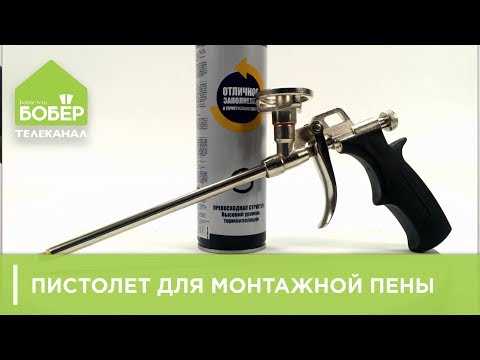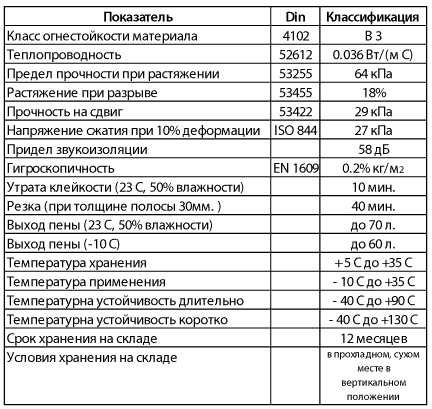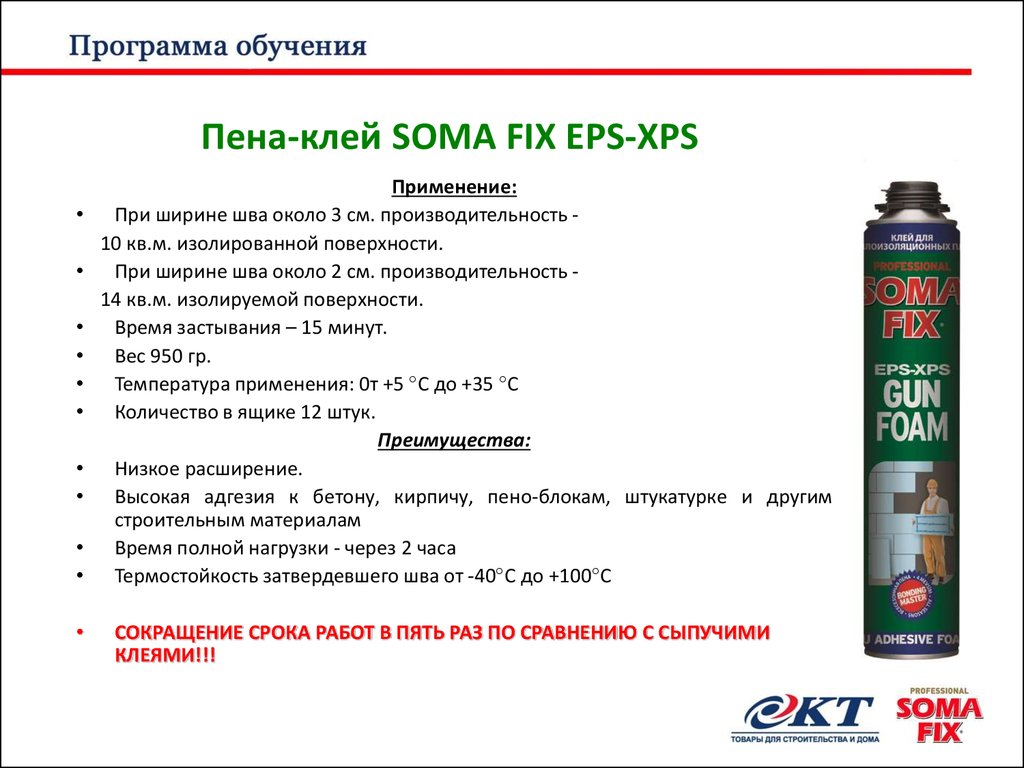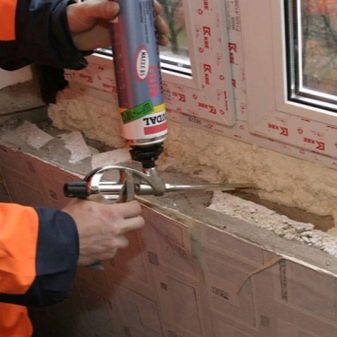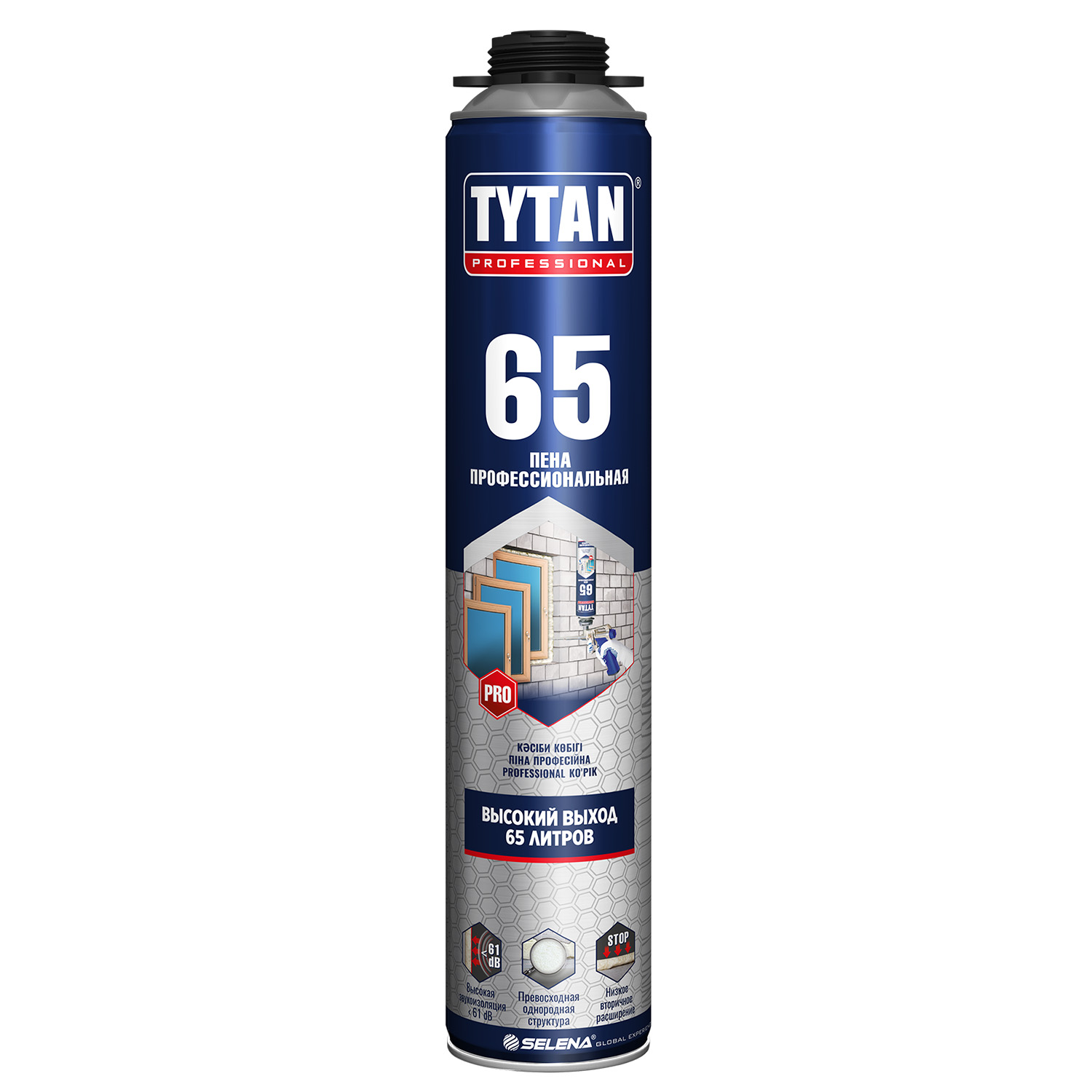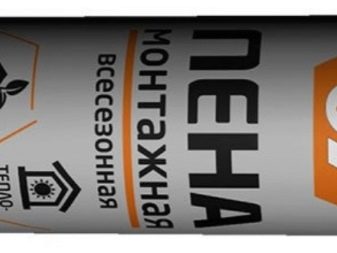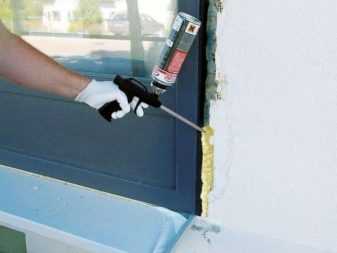Terms of use
Experts recommend adhering to several rules when working with polyurethane foam.
- Since it is not easy to remove foam from the skin, you should first arm yourself with work gloves.
- In order for the composition to mix, shake it thoroughly for 30-60 seconds. Otherwise, a resinous composition will come from the cylinder.
- For quick adhesion, the workpiece is moistened. Then you can go directly to applying the foam. The container must be held upside down to displace the polyurethane foam from the container. If this is not done, the gas will be squeezed out without foam.
- Foaming is carried out in slots whose width is no more than 5 cm, and if more, then use polystrile. It saves foam and prevents expansion, which most often leads to structural failure.

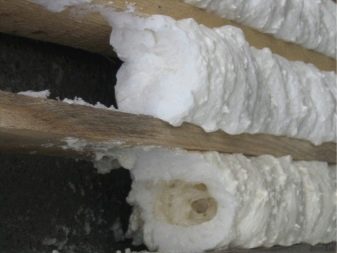
- Foam from bottom to top with even movements, filling a third of the gap, because the foam hardens with expansion and fills it. When working at low temperatures, you can only work with foam heated in warm water up to + 40 ° C.
- For quick adhesion, it is necessary to spray the surface with water. Spraying at negative temperatures is prohibited, as it is impossible to obtain the desired effect.
- In case of accidental contact with mounting foam on doors, windows, floors, it is necessary to remove it with a solvent and a rag, and then wash the surface. Otherwise, the composition will harden and it will be very difficult to remove it without damaging the surface.
- 30 minutes after using the installation compound, you can cut off the excess and plaster the surface. For this, it is very convenient to use a hacksaw or a knife for construction needs. The foam begins to fully set after 8 hours.
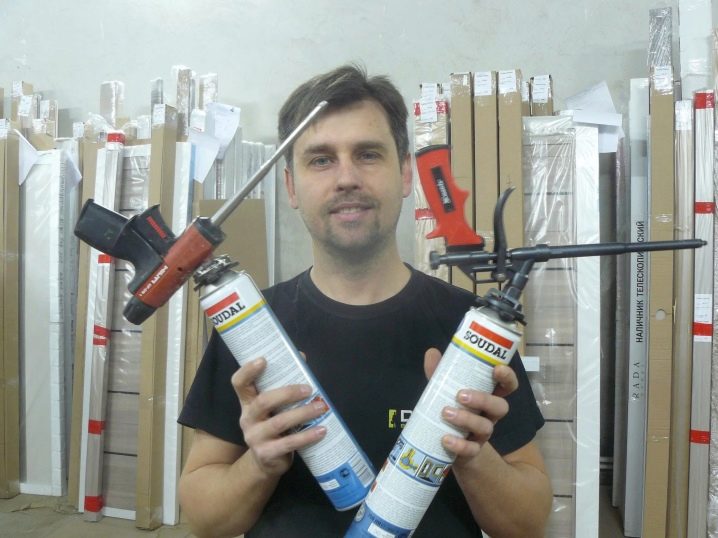
Professionals recommend that you carefully read the precautions before working with polyurethane foam.
- The sealant can irritate the skin, eyes and respiratory tract. Therefore, it is recommended that the worker wear protective goggles, gloves and a respirator when ventilation is poor. Once hardened, the foam is not harmful to human health.
- In order to avoid the purchase of fakes, you should use some recommendations: ask the store for a product certificate; examine the quality of the label. Since they try to produce fakes with minimal costs, the printing industry does not attach much importance. Defects of the label are visible on such cylinders with the naked eye: displacement of paints, inscriptions, other storage conditions; date of manufacture. Expired material loses all its basic qualities.

Types and technical characteristics
To obtain a reliable, tight seam, it is necessary to take into account not only the temperature regime, but also the humidity, the position of the working area, the width of the voids, and the amount of work. In order for the building material to cope with each task at hand, there are different types of it with certain fillers. Depending on the amount of work, foam can be:
- Household. Produced in small cylinders with a dispenser tube. Suitable for small repair areas, does not require additional equipment.
- Professional. It has a PRO article and is designed for a large installation volume. A special pistol is required to use it.
Seasonality of use:
- Winter. Designed for outdoor construction work at temperatures from -5˚С, high humidity. They have permissible lower temperature limits of use up to -60˚С.
- Summer.It is allowed to use indoors or for external installation in the temperature range from +5 to + 35˚С, humidity not more than 80%.
- All-season. The most versatile for outdoor work in harsh weather conditions. Permissible operating temperature from -10˚C to + 35˚C, relative humidity 75%.

By chemical composition:
- Two-component. The balloon is divided into two cavities: one contains the main composition, the other contains a polymerization reagent. Under pressure, both components are squeezed out and mixed directly in the tube. Opened packaging cannot be stored, therefore it is produced in a volume of no more than 220 ml.
- One-component. It is cheaper, has a shorter shelf life. The curing reaction takes place due to moisture and begins to take place already in the cylinder. Has a higher expansion ratio. After opening the package, it can be used several times.
By the degree of refractoriness:
- Category B I - non-combustible composition.
- Category B II - self-extinguishing when burning.
- Category B III - combustible.
Frost-resistant assembly foam for outdoor use has the following technical assumptions:
- Working temperature: from -10 to + 35˚С. Some materials remain functional at -30˚С.
- The coefficient of expansion of the volume of the working mass: usually this figure is 1/100. That is, from 100 ml. material in a cylinder can be obtained 10 liters. foam at the outlet.
- Porosity from 50 to 85%. The higher the porosity, the better the thermal insulation.
- Adhesive properties. Polyurethane foam materials have high adhesion to stone, wood, metal, concrete. Not suitable for Teflon and plastic substrates.
- The viscosity, the higher it is, the better the sealant holds its shape, does not drain from the base.
- Drying time. Depends on temperature and humidity. Winter foams set from 5 to 12 hours.
- Shrinkage should not exceed 5%.
Soudal
Professional polyurethane foam that can be purchased at most hardware stores. It has a low expansion and is suitable for thin joints where accurate application is especially important.
Soudal adheres well not only to brick or concrete, but also to metal or glazed surfaces. The tip is included, so the cylinder can be used not only with a construction gun.
Advantages:
- Dimensional stability;
- Uniform texture;
- Ease of application;
- Complete protective gloves.
Disadvantages:
Is not washed off.
Users note in reviews that they come across defective cylinders with a poorly working valve.
Fire-resistant qualities are especially important when applied in rooms with high temperature conditions: baths, factories, restaurants, nightclubs and other entertainment establishments. Flame retardants are added to their composition, imparting non-combustible properties to the entire composition. After analyzing this market segment, 3 leaders were identified that professionals prefer to buy.
This is interesting: Heat-resistant glue for metal - pros and cons
Features of the use of frost-resistant polyurethane foams for outdoor use
- At negative temperatures, the air contains a relatively small amount of moisture, which, as you know, is necessary for the full expansion of the polyurethane foam and for its better hardening without compromising the quality characteristics of the material. For this reason, polyurethane foam can shrink in cold weather as the viscosity increases in dry and cold weather. In the future, for some time, the volume will increase (secondary expansion), but much more slowly than at a positive temperature.
- In the process of secondary volumetric expansion, it is strongly not recommended to touch or displace the foam, since the upper film formed during cooling is very fragile and fragile.
- For the full polymerization of polyurethane foam, sufficient atmospheric moisture is required, which is present in the air in a limited amount at low temperatures, therefore the process of foam hardening in frost increases over time.
- It is necessary to take into account the uneven consumption of foam from one cylinder, depending on the temperature of the work: at room temperature, the foam output from one cylinder is approximately 40 liters, and the hardening time is 1-1.5 hours; at a temperature close to 0 degrees - about 33 liters and a hardening time of about 4 hours; and at negative (10-12 degrees), the foam consumption is no more than 25 liters, and the hardening period extends to 10 hours.
General principles of using polyurethane foam for outdoor use
- The most optimal temperature for working with frost-resistant foam for outdoor use is in the range from -10 to +25 degrees, although there are varieties of outdoor foams that work from -20 degrees.
- It is recommended to keep the cylinder with polyurethane foam at room temperature for at least 8-10 hours before use (as a rule, it is enough to leave the cylinder in a warm room overnight, and in the morning to use it for its intended purpose).
- As a rule, before applying the foam, the treated surfaces should be additionally moistened for better polymerization, in cases of using foam at low temperatures, such moistening must be done immediately before application, avoiding local accumulation of water, when the formation of icy areas becomes possible, since polyurethane foam, like in cases with polyethylene, does not work on surfaces covered with ice, snow or frost.
- If the thickness of the applied layer of foam is more than 5 cm, then it is recommended to cover it, for example, with the help of cardboard.
- All subsequent operations with already hardened foam, for example, trimming protruding bumps, should be carried out no earlier than a day later.
- Topical winter foam cans should be shaken longer than others because the foam is more viscous.
We draw your attention to the fact that the term and temperature regime of storage of various brands of mounting foams for outdoor use may differ slightly from different manufacturers, so always carefully study the instructions for the purchased product.
Manufacturers
The construction market is rich in a variety of sealants, but this does not mean that all of them meet the quality requirements. Often, stores receive foams that have not been certified and do not meet the necessary requirements. Some manufacturers do not completely pour the composition into a container, or instead of gas use volatile components that harm the atmosphere.
The most popular manufacturer of winter types of sealants is Soudal ("Arctic").
The products have the following characteristics:
- temperature of use - above -25 ° C;
- foam output at -25 ° C - 30 liters;
- exposure duration at -25 ° C - 12 hours;
- foam heating temperature - no more than 50 ° C.
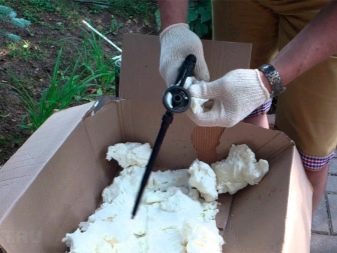
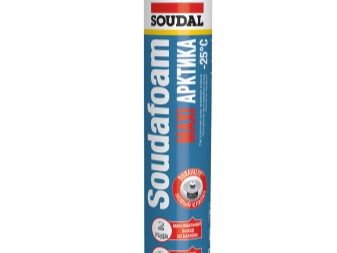
Another equally well-known manufacturer of building materials is the Macroflex company.
Products have the following properties:
- use temperature - above -10 ° С;
- polyurethane base;
- dimensional stability;
- exposure duration - 10 hours;
- foam output at -10 ° C - 25 liters;
- noise insulation properties.
For the rules of using polyurethane foam at subzero temperatures, see the following video.
Varieties
If the composition of the material from different manufacturers has slight differences, then depending on the design of the cylinder itself, the foam can be professional and household.
Professional
Professional foam or pistol foam is typically used in conjunction with an applicator gun as a device for dispensing material.For this, the design of the cylinder is equipped with a special operating valve on which the pistol is put on.
 In professional construction, foam is used with an applicator gun
In professional construction, foam is used with an applicator gun
The use of a dispensing device allows the material to be delivered in portions into slots and recesses, to control the amount of material and to save its consumption. The device itself is ergonomically designed and allows one-handed operation using the trigger and handle. The long, thin metal nozzle allows material to be fed into the recesses. In this case, the position of the bottom of the cylinder does not matter.
The applicator gun is a professional device, therefore it has a high cost. It is purchased by builders, installers, whose field of activity is directly related to its application.
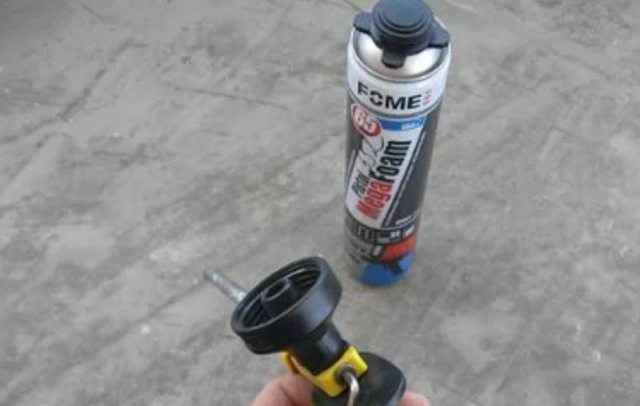 The applicator gun allows you to use the balloon in any position
The applicator gun allows you to use the balloon in any position
Modern cylinders are equipped with refillable valves. This ensures hermetic closure of the container and the preservation of the contents until the next use without losing its qualities and drying out. The mechanism for attaching the cylinder to the gun can also be different: the valve can be threaded and screwed onto the gun or fastened on.
Household
For domestic use, it makes no sense to purchase a dispenser gun, since special aerosol solvents are required to care for it, which also cost money.
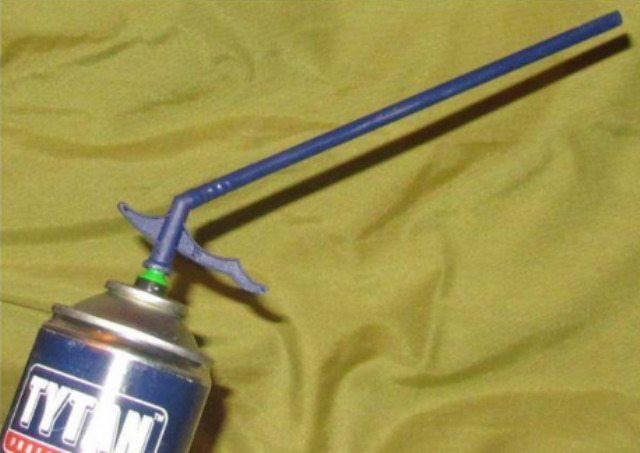 For one-time use, it is more expedient to use a balloon with a plastic tube.
For one-time use, it is more expedient to use a balloon with a plastic tube.
For occasional home use, manufacturers offer household polyurethane foam. It is also called semi-professional or manual and is represented by only one cylinder without additional devices, except for a nozzle in the form of a plastic tube, which is put on the valve before starting work.
Seasonality classification
Depending on the requirements for temperature conditions, polyurethane foam can be:
- summer;
- winter;
- all-season.
It is recommended to use summer foam at temperatures from 5 to 35 degrees. Winter foam is used at temperatures from 18 degrees below zero to 35 degrees with a plus sign. The presence of special additives and additives ensures the passage of the polymerization process in conditions of low atmospheric humidity
It is important to remember that the higher the air temperature, the greater the foam expansion coefficient and vice versa.
 The expansion coefficient of the foam depends on the air temperature
The expansion coefficient of the foam depends on the air temperature
The all-season option is rarely found on the shelves of hardware stores, since this material is relatively new and is not made by all manufacturers. The composition is characterized by improved qualities compared to the winter and summer versions, has an increased coefficient of expansion and a high foaming rate at temperatures up to minus ten degrees.
Properties
This material is characterized by:
- the volume of foam, which indicates the size of the balloon;
- adhesion, that is, the strength of adhesion to the surface;
- foaming, which means the transformation of the composition from a liquid state into a foam;
- expansion, which says how much the foam volume increases during the curing process. This indicator is important if sealing of deep seams and joints is required;
- secondary expansion.
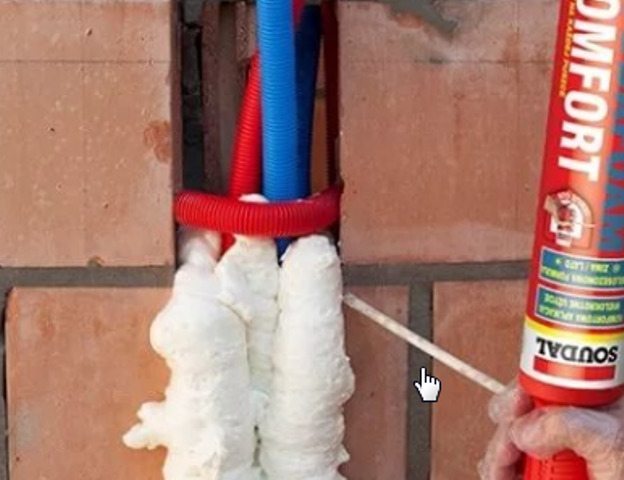 Foam expansion factor is especially taken into account when working with deep gaps
Foam expansion factor is especially taken into account when working with deep gaps
The secondary expansion index has a negative effect and can play a cruel joke if this property of polyurethane foam is ignored. For example, when installing metal-plastic structures in the form of windows and doors, as a result of the secondary expansion of the foam, additional pressure arises on the structural elements with their subsequent deformation. To prevent this, during the installation of windows, it is necessary to install spacers.
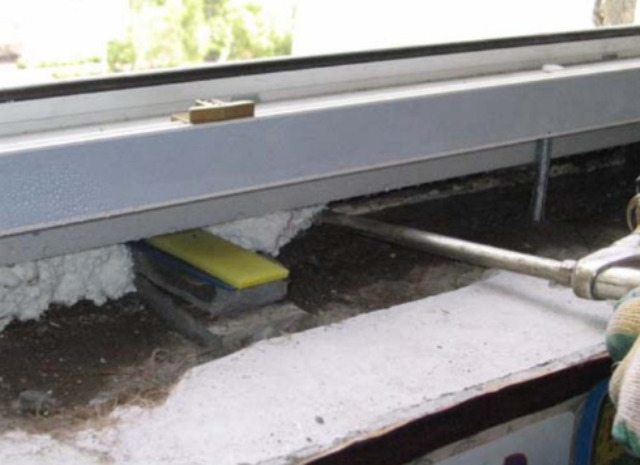 Spacers prevent window deformation
Spacers prevent window deformation
Foam cannot be used for assembly purposes on ice, polyethylene, Teflon, silicone and oily surfaces.
Positive qualities of polyurethane foam:
- non-transmission of electric current;
- multifunctionality of use - as a heater, a sealant, an adhesive and soundproofing composition;
- water-repellent properties;
- fire safety class B1;
- due to the property to significantly increase in volume, the foam effectively fills the most inaccessible places: seams, cracks, depressions, quickly hardening at the same time;
- the applied composition does not rot and is not afraid of mold;
- has high thermal insulation qualities;
- can be used to fix plumbing and heating pipes, electrical wiring;
- used as a sealant with insulating properties when installing roofing materials;
- polyurethane foam when installing windows, due to its high adhesive properties, provides reliable fixation of window and door blocks without the use of nails and screws;
- soundproofing qualities allow you to dampen noise from vibrations. When installing plastic windows, this property complements the quality of the structure and enhances the effect of soundproof rubber seals installed in the window.
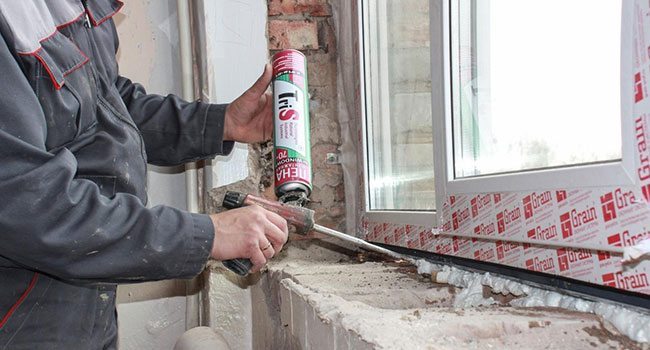 Installation foam reliably fixes window or door structures
Installation foam reliably fixes window or door structures
Disadvantages:
despite the fact that the material repels water from its surface, moisture can accumulate in its porous structure, which over time destroys the structure of the foam and reduces its operational properties;
destroyed by direct sunlight;
the presence of strict requirements for storage of cylinders - vertical position and ambient temperature from not lower than 5 and not higher than 25 degrees;
after contact with human skin, it is very difficult to wipe off and only with the help of solvents, therefore it is important to use gloves when working with foam.
Permissible temperature conditions
Polyurethane foam hardens due to moisture in the air. Therefore, the percentage of moisture has a direct impact on the parameters of the polymerization process - speed and quality.
Cold air is characterized by a low percentage of moisture, therefore, in such conditions, the substance polymerizes much worse. In order not to limit the range of applications, manufacturers enrich the composition with special ingredients.
Accordingly, they are distinguished:
- Summer. On the cylinders, the temperature is indicated from five to thirty-five degrees. Those. the material should be applied on surfaces whose temperature is from the above boundaries. But the temperature parameters do not affect the stability temperature of the polymerized foam. In the solidified state, the substance can withstand temperatures ranging from minus fifty to plus ninety, regardless of the type;
- Winter. The operating temperature limits are minus eighteen - plus thirty-five. Note that the foam yield depends on the ambient temperature. For example, in spring, when the temperature is plus twenty - 30 liters of foam is obtained from a 300 ml cylinder, and in winter, at minus fifteen - half as much, 15 liters.
- All-season. Its formula is based on the best features of previous product modifications. Such polyurethane foam is characterized by a high yield of the substance, a rather high solidification rate. They work with it at a low temperature regime without preliminary warming up the cylinder.
The video will tell you in detail about the properties and features of the polyurethane foam.
Views
Polyurethane foam is a thick prepolymer based on durable polyurethane foam. Under high pressure, the mass is enclosed in a metal container with a dispenser. The main reaction occurs upon contact with air: the particles of the sealant instantly expand and take the shape necessary for the builder, increasing in volume several times at once.Working with this material is not difficult, and the fast hardening process allows you not to delay the installation of the object for several days.
Conventionally, all types of foam can be divided into household and professional. The first is distinguished by its small package size, simple and versatile characteristics. The cylinder is immediately equipped with a spray nozzle. Series for use by master builders are made under a mounting gun - a small device that allows you to penetrate narrow holes, it is better to control the amount of foaming. It is simply irreplaceable when installing a window unit, assembling a balcony or other complex work.
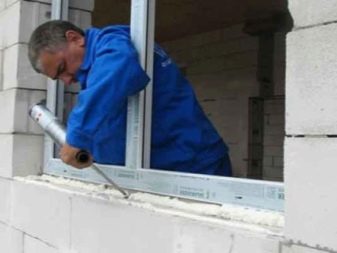
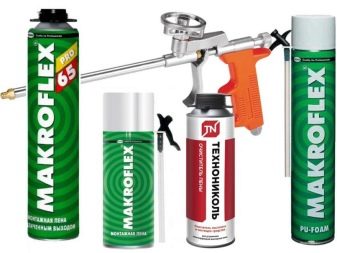
The main types of polyurethane foam that are produced on the building materials market:
- summer, suitable for work in warm conditions from May to October;
- low-temperature, intended for installation in winter;
- all-season or universal, the operating temperature of which ranges from -10 ° to + 50 ° C.
If it is necessary to carry out installation or construction at an object with an increased fire hazard, experts recommend using high-temperature foam. It is formulated from high quality polymers that do not burn even in an open flame. This allows you to restrain the air flow in the event of a fire, ensures the stability of any structure. Such material can be used in schools, shopping malls and hospitals, to insulate saunas.
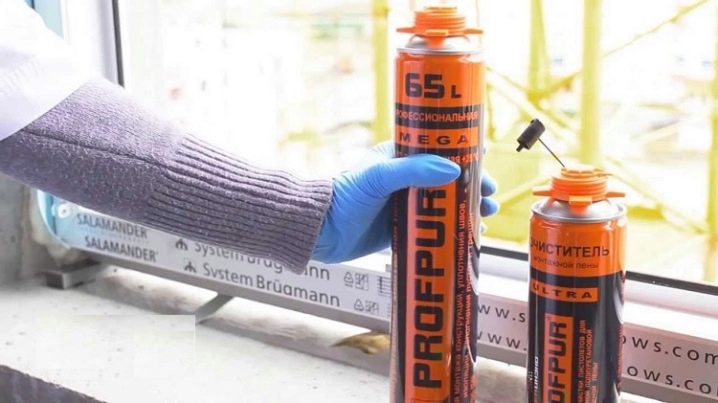
What can the use of polyurethane foam, not intended for cold weather, lead to?
The use of summer foam in conditions of negative temperatures and insufficient atmospheric humidity often leads to the following problems:
- the foam composition does not reach the required consistency;
- a full-fledged hermetic base cannot be formed;
- the hardened mass, as a rule, immediately begins to color, even with a slight effect on it.
Using frost-resistant types of polyurethane foams, you can avoid the problems listed above. Winter foams, unlike summer foams, can be used at subzero temperatures due to a specially selected chemical composition - frost-resistant foams contain specialized additives that allow the substance to polymerize at subzero temperatures and insufficient air humidity.
Technical characteristics of frost-resistant polyurethane foam for outdoor use
Today, there are many brands of frost-resistant foams on the market, differing in cost, quality and conditions of use. Most varieties of such funds are intended for use at temperatures from -10 to +35 degrees. However, there are also grades of winter foams that can be worked with down to minus 30 degrees.
The main characteristics of frost-resistant foam include:
- Volumetric foam output, measured in liters. Up to 30 liters of foam can be obtained from a 300 ml bottle. It should be borne in mind that with decreasing temperature, the volumetric foam yield decreases.
- Primary expansion - this indicator indicates the degree of increase in the volume of a substance and is measured in%. For different brands of winter foams, the expansion varies from 30 to 50%.
- Porosity. First-class polyurethane foams can have up to 88% porosity.
- Adhesion is the ability of the foam to adhere reliably to the substrate. As a rule, all frost-resistant foams for outdoor use have high adhesion to such common materials in construction as: concrete, wood, brick, metal, etc.
- Viscosity - this indicator is responsible for the required foam consistency. With an increase in viscosity, the quality of the adhesion of the foam to the treated surface is improved, and the possibility of foam dripping from the base is minimized.
- Drying time - For winter foams the drying time ranges from 4 to 10 hours. During this time, a dense crust forms on the surface of the foamed mass.Over the next day, it is not recommended to touch this layer until it is completely dry. Otherwise, the risk of damage to the integrity of the shell increases.
- Shrinkage. For high-quality winter foams, this characteristic should not be more than 4%.
Features of the technology of using frost-resistant foam for outdoor use:
Before starting work, the foam cylinder must be kept in a warm room for at least half a day. Some manufacturers recommend before use to heat the cylinder in warm water with a temperature of 30-50 ° C. The most advanced brands of winter assembly foams may not contain such recommendations, since their composition already includes components that increase the volumetric yield of the mixture from the cylinder at low temperatures. In the case of conventional brands of frost-resistant foams, it is quite enough to leave them in a warm room overnight so that they can be used for their intended purpose in the morning.
The surfaces to be treated should be thoroughly cleaned of snow and ice, as well as any manifestations of contamination in the form of debris and dust.
Immediately before work, it is allowed to slightly moisten the treated surfaces with water using a spray gun.
Before releasing the foam, the container must be vigorously shaken for 15-30 seconds, which will ensure the mixing of the foam components inside the container to a homogeneous state, thereby increasing the foam output.
Work on applying the foam should be carried out in the position of the cylinder - upside down. In this case, the cracks and joints should be filled with foam carefully and in compliance with the required degree of filling the space - by about 1/3 of the volume
It should be borne in mind that during the subsequent polymerization, the foam will expand and thus fill the rest of the space.
If necessary, after the first layer of foam has hardened, all other layers can be applied sequentially.
An important feature of the use of frost-resistant foam in conditions of negative temperatures is the absence of the need for spraying with water in order to improve adhesion, while in summer this approach is preferable.
After the polyurethane foam has hardened, it should be protected as quickly as possible from direct sunlight, otherwise the foam will acquire excessive porosity and become brittle, which will reduce its valuable performance characteristics.

